But for the remark of an old lady in Florida and a puncture while motoring to Oxford, this book would never have been written. Events drove Roberts into the discovery, and finally the purchase of an Elizabethan cottage. After that he "went rustic." This is the actual story of the cottage itself, how it was found, how it was renovated and how Roberts learns a lot at the price of gardening back-ache. Trails led him into many cottages, to the chimney where Dick Turpin hid, to the fireside of the old village blacksmith and to friends who, in their nineties, remember the "hungry forties." It's Roberts' personal adventure among birds and bulbs in a Chilterns valley to find the cottage of his dreams. Followed by Gone Rambling, Gone Afield and Gone Sunwards. https://cosmiccauldronbooks.com.au/p/gone-rambling-cecil-roberts/
- Sorry, this product is unavailable.
- Sorry, this product is unavailable.
-

Gone Rustic: Cecil Roberts
$15.00 -
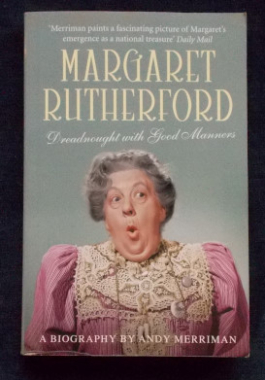 Margaret Rutherford was without a doubt one of Britain's best-loved comic actresses. But behind the kindly, serene front Rutherford presented to the world lay a life of trauma and repeated nervous breakdown - the legacy of the legacy of family tragedy that saw her father murder her grandfather during a bout of mental illness and her depressive mother later kill herself. Rutherford appeared in such thoroughly English classics as Blithe Spirit, The Importance of Being Earnest, Passport To Pimlico and I'm All Right, Jack! She was Miss Marple in four films - and entirely created for the screen the role of Agatha Christie's elderly and fearless private detective. But the laughter she inspired on screen masked a tragic personal life in which her purely platonic marriage to actor Stringer Davis lead her to forming unrequited crushes on unobtainable, younger men. A vulnerable woman, liked and respected by all, known for her quiet acts of kindness, whose life story has great appeal to everyone who appreciates both classic English comedy and simple human decency. Illustrated with black and white photographs.
Margaret Rutherford was without a doubt one of Britain's best-loved comic actresses. But behind the kindly, serene front Rutherford presented to the world lay a life of trauma and repeated nervous breakdown - the legacy of the legacy of family tragedy that saw her father murder her grandfather during a bout of mental illness and her depressive mother later kill herself. Rutherford appeared in such thoroughly English classics as Blithe Spirit, The Importance of Being Earnest, Passport To Pimlico and I'm All Right, Jack! She was Miss Marple in four films - and entirely created for the screen the role of Agatha Christie's elderly and fearless private detective. But the laughter she inspired on screen masked a tragic personal life in which her purely platonic marriage to actor Stringer Davis lead her to forming unrequited crushes on unobtainable, younger men. A vulnerable woman, liked and respected by all, known for her quiet acts of kindness, whose life story has great appeal to everyone who appreciates both classic English comedy and simple human decency. Illustrated with black and white photographs. -
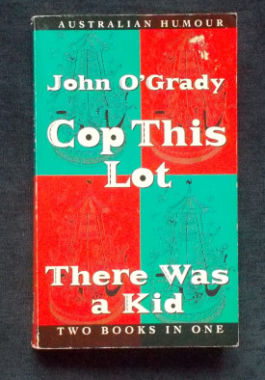 Cop This Lot: Nino Culotta: Book II of They're A Weird Mob. Nino, now an Australian with the help of his mates and Kay, his missus, has a chance to get a few laughs at the expense of workmates Joe and Dennis as they accompany him on a trip to Italy to visit Nino's parents. Joe and Dennis have never left Sydney and the plan is to go by 'plane and cargo ship then buy a cheap car in Germany to drive to Italy. At the Culotta family villa, Nino's father, a crusty and misbehaving patriarch who loves to conduct local feuds, is only concerned that Nino and Kay have not been 'properly' married by an Italian priest. Nino's mother is worried that the children will be eaten by kangaroos. By the time they return to Sydney, Joe and Dennis have learnt a smattering of several European languages and despite their working-class 'Ocker' background, have acquired a veneer of European sophistication, preferring wine to beer and Italian suits to Jack Howe singlets - a veneer, of course, that doesn't last too long! Illustrated by 'Wep'. There Was A Kid: John O'Grady: Author John O'Grady's (Nino Culotta) father, with no practical experience and very little money, threw up city life and became a farmer - he bought his land, worked hard, applied the latest scientific methods - and went broke. Yet O'Grady has wonderful memories of growing up on the farm near Tamworth and recounts them all here with his usual wry humour. Illustrated by Collinridge Rivett.
Cop This Lot: Nino Culotta: Book II of They're A Weird Mob. Nino, now an Australian with the help of his mates and Kay, his missus, has a chance to get a few laughs at the expense of workmates Joe and Dennis as they accompany him on a trip to Italy to visit Nino's parents. Joe and Dennis have never left Sydney and the plan is to go by 'plane and cargo ship then buy a cheap car in Germany to drive to Italy. At the Culotta family villa, Nino's father, a crusty and misbehaving patriarch who loves to conduct local feuds, is only concerned that Nino and Kay have not been 'properly' married by an Italian priest. Nino's mother is worried that the children will be eaten by kangaroos. By the time they return to Sydney, Joe and Dennis have learnt a smattering of several European languages and despite their working-class 'Ocker' background, have acquired a veneer of European sophistication, preferring wine to beer and Italian suits to Jack Howe singlets - a veneer, of course, that doesn't last too long! Illustrated by 'Wep'. There Was A Kid: John O'Grady: Author John O'Grady's (Nino Culotta) father, with no practical experience and very little money, threw up city life and became a farmer - he bought his land, worked hard, applied the latest scientific methods - and went broke. Yet O'Grady has wonderful memories of growing up on the farm near Tamworth and recounts them all here with his usual wry humour. Illustrated by Collinridge Rivett. -
 Are You Irish Or Normal? Sean O'Grada. O'Grada traces the history of the Irish in his own inimitable fashion, from many centuries B.C. (The First Irishman was a Greek) through the 9th, 10th and 11th centuries (A Man's Best Enemy is His Neighbour - And Where Was The O'Neill?) into the 15th and 16th centuries (A Good Sharp Axe Makes Divorce Permanent) and beyond. Now Listen, Mate! John O'Grady: O'Grady sez: These essays, or whatever they may be, represent my thoughts and conclusions on various things and people. My eldest son wanted me to write my autobiography: "The story of your life, Pop" he said. "And tell the truth." He can go and jump in Lake Burley Griffin. I offer instead some comment on what life has taught me. After sixty years of knocking around and being knocked about, a man acquires a sort of philosophy. Basically, mine is that nothing in life is worth getting steamed up about, and most things are good only for a laugh. Illustrated by Paul Rigby.
Are You Irish Or Normal? Sean O'Grada. O'Grada traces the history of the Irish in his own inimitable fashion, from many centuries B.C. (The First Irishman was a Greek) through the 9th, 10th and 11th centuries (A Man's Best Enemy is His Neighbour - And Where Was The O'Neill?) into the 15th and 16th centuries (A Good Sharp Axe Makes Divorce Permanent) and beyond. Now Listen, Mate! John O'Grady: O'Grady sez: These essays, or whatever they may be, represent my thoughts and conclusions on various things and people. My eldest son wanted me to write my autobiography: "The story of your life, Pop" he said. "And tell the truth." He can go and jump in Lake Burley Griffin. I offer instead some comment on what life has taught me. After sixty years of knocking around and being knocked about, a man acquires a sort of philosophy. Basically, mine is that nothing in life is worth getting steamed up about, and most things are good only for a laugh. Illustrated by Paul Rigby. -
 An unusual and enchanting album of all things cat and cats - cats with personalities, drawn, painted, sculpted or sewn by international artists; cats doing everything from sitting pretty to participating in circus acts; cats in history and worshipped cats...it's a light-hearted look at cats in life and art. Many beautiful illustrations.
An unusual and enchanting album of all things cat and cats - cats with personalities, drawn, painted, sculpted or sewn by international artists; cats doing everything from sitting pretty to participating in circus acts; cats in history and worshipped cats...it's a light-hearted look at cats in life and art. Many beautiful illustrations. -
 The team behind the The Book of General Ignorance turns conventional biography on its head. Following their Herculean - or is it Sisyphean?- efforts to save the living from ignorance, the two wittiest Johns in the English language turn their attention to the dead. As the authors themselves say, “The first thing that strikes you about the Dead is just how many of them there are.” Helpfully, Lloyd and Mitchinson have employed a simple but ruthless criterion for inclusion: the dead person has to be interesting. Here, then, is a dictionary of the dead, an encyclopedia of the embalmed. Ludicrous in scope, whimsical in its arrangement, this wildly entertaining tome presents pithy and provocative biographies of the no-longer-living from the famous to the undeservedly and - until now - permanently obscure. Spades in hand, Lloyd and Mitchinson have dug up everything embarrassing, fascinating and downright weird about their subjects’ lives and added their own uniquely irreverent observations. Organized by capricious categories such as dead people who died virgins, who kept pet monkeys, who lost limbs, those whose corpses refused to stay put - the dearly departed, from the inventor of the stove to a cross-dressing, bear-baiting female gangster finally receive the epitaphs they truly deserve. Discover: Why Freud had a lifelong fear of trains; the one thing that really made Isaac Newton laugh; how Catherine the Great really died (no horse was involved) and much more.
The team behind the The Book of General Ignorance turns conventional biography on its head. Following their Herculean - or is it Sisyphean?- efforts to save the living from ignorance, the two wittiest Johns in the English language turn their attention to the dead. As the authors themselves say, “The first thing that strikes you about the Dead is just how many of them there are.” Helpfully, Lloyd and Mitchinson have employed a simple but ruthless criterion for inclusion: the dead person has to be interesting. Here, then, is a dictionary of the dead, an encyclopedia of the embalmed. Ludicrous in scope, whimsical in its arrangement, this wildly entertaining tome presents pithy and provocative biographies of the no-longer-living from the famous to the undeservedly and - until now - permanently obscure. Spades in hand, Lloyd and Mitchinson have dug up everything embarrassing, fascinating and downright weird about their subjects’ lives and added their own uniquely irreverent observations. Organized by capricious categories such as dead people who died virgins, who kept pet monkeys, who lost limbs, those whose corpses refused to stay put - the dearly departed, from the inventor of the stove to a cross-dressing, bear-baiting female gangster finally receive the epitaphs they truly deserve. Discover: Why Freud had a lifelong fear of trains; the one thing that really made Isaac Newton laugh; how Catherine the Great really died (no horse was involved) and much more. -
 Moving into an unfurnished house, John uses the ads in newsagents' windows to buy things like a bed and a settee. On impulse, one day, he replies to an advert for a psychic masseur named Lucy, who tells him some home truths as he sits on her settee in his underpants. So begins a year of self-discovery and an obsession with newsagents' windows, taking John to a shoe-exhibition, an Ayckbourn play, to a wrestling match. He becomes the owner of a man's entire video collection, a clapped-out Ford Escort - and discovers a community of a bygone age. Looking to improve his German, he meets a pretty German girl named Leni...
Moving into an unfurnished house, John uses the ads in newsagents' windows to buy things like a bed and a settee. On impulse, one day, he replies to an advert for a psychic masseur named Lucy, who tells him some home truths as he sits on her settee in his underpants. So begins a year of self-discovery and an obsession with newsagents' windows, taking John to a shoe-exhibition, an Ayckbourn play, to a wrestling match. He becomes the owner of a man's entire video collection, a clapped-out Ford Escort - and discovers a community of a bygone age. Looking to improve his German, he meets a pretty German girl named Leni... -
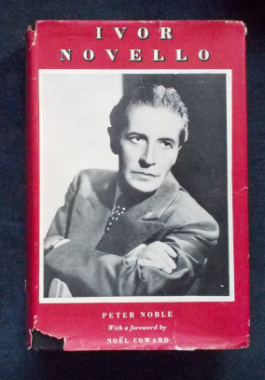
Ivor Novello: Peter Noble
$12.00Welsh actor, dramatist, singer and composer who became one of the most popular British entertainers of the first half of the 20th century. Ivor Novello's sudden death on March 6, 1951 was a blow to the English theatre and a tragedy felt by people the world over. This biography was written with his complete co-operation and is not only an account of a fabulous career but a warm study of personality containing many glimpses of the British stage over fifty years. Among Novello's well-known songs are Keep the Home Fires Burning, Fold Your Wings, Shine Through My Dreams and Rose of England. After World War I he wrote successfully for musical comedy and revue and built a silent film career on the strength of one publicity photograph. He dominated the British musical theatre from the mid-1930s until 1950. His sudden death came two hours after he had performed in the stage play of King's Rhapsody. Illustrated with black and white archival photographs. -
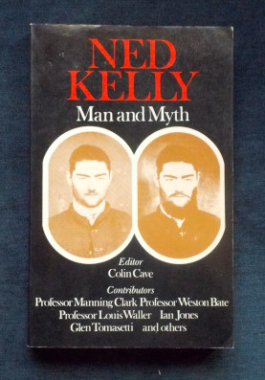 In all of Australia's history, the bizarre life and exploits of Edward 'Ned' Kelly and his small gang are probably the most often referred to, the most emotive and the least well documented. Stories of Ned, Dan, Joe Byrne and Steve Hart abound. Kelly the folk-hero, the myth, the legend is perpetuated in songs, paintings and a welter of conflicting opinions. Who - in all this confusion - was the real Ned Kelly? Published on the centenary of Kelly's hanging, it's a revealing study of the man and his times. With contributions from Professor Manning Clark, Professor Weston Bate, Professor Louis Walker, Ian Jones, Glen Tomasetti and others. Illustrated.
In all of Australia's history, the bizarre life and exploits of Edward 'Ned' Kelly and his small gang are probably the most often referred to, the most emotive and the least well documented. Stories of Ned, Dan, Joe Byrne and Steve Hart abound. Kelly the folk-hero, the myth, the legend is perpetuated in songs, paintings and a welter of conflicting opinions. Who - in all this confusion - was the real Ned Kelly? Published on the centenary of Kelly's hanging, it's a revealing study of the man and his times. With contributions from Professor Manning Clark, Professor Weston Bate, Professor Louis Walker, Ian Jones, Glen Tomasetti and others. Illustrated. -
 The fascinating and true story of a 20th century bush legend. Known only from fleeting glimpses to the people of South Australia's Riverland region who gave him his name, the Possum deliberately turned his back on society to live almost entirely off the land as a recluse on the banks of the Murray River. It took Max Jones, country detective, almost thirty years to solve the mystery behind the man called Possum. From chance encounters, brief meetings and full scale conversations with the man himself - and from the testimony of others - the author pieced together Possum's extraordinary life story. Illustrated with photographs, sketches, newspaper articles and entries from the Possum's own diary.
The fascinating and true story of a 20th century bush legend. Known only from fleeting glimpses to the people of South Australia's Riverland region who gave him his name, the Possum deliberately turned his back on society to live almost entirely off the land as a recluse on the banks of the Murray River. It took Max Jones, country detective, almost thirty years to solve the mystery behind the man called Possum. From chance encounters, brief meetings and full scale conversations with the man himself - and from the testimony of others - the author pieced together Possum's extraordinary life story. Illustrated with photographs, sketches, newspaper articles and entries from the Possum's own diary. -
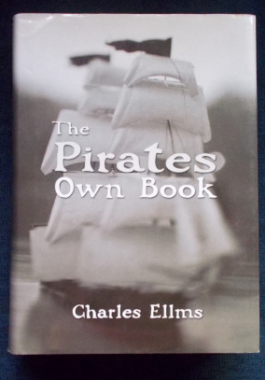 Originally published in 1837, here are the 'Authentic Narratives of the Most Celebrated Sea Robbers' - pirates! True stories of the diabolical desperadoes who plundered ships on the high seas and murdered their passengers and crews. The stories - based on contemporary newspaper accounts, trial proceedings and Admiralty records - describe in lurid detail the life, atrocities and bloody death of the infamous Black Beard as well as the cold-blooded exploits of Jean Lafitte, Robert Kidd, Edward Low, Thomas White, Anne Bonney, Mary Read and scores of other maritime marauders. For those interested in the true-life adventures of the ruthless men and women who sailed under the black flag so long ago. With illustrations reproduced from the original edition.
Originally published in 1837, here are the 'Authentic Narratives of the Most Celebrated Sea Robbers' - pirates! True stories of the diabolical desperadoes who plundered ships on the high seas and murdered their passengers and crews. The stories - based on contemporary newspaper accounts, trial proceedings and Admiralty records - describe in lurid detail the life, atrocities and bloody death of the infamous Black Beard as well as the cold-blooded exploits of Jean Lafitte, Robert Kidd, Edward Low, Thomas White, Anne Bonney, Mary Read and scores of other maritime marauders. For those interested in the true-life adventures of the ruthless men and women who sailed under the black flag so long ago. With illustrations reproduced from the original edition. -
 From New Year's Day 1995 to June 1996, Alec Guinness kept a diary in which he recorded not only day-to-day events, but also a range of memories, views and musings. Certain pre-occupations, theatre and film, books and paintings; the Church; food and drink and the delights of home and family. Friendship is also central to Sir Alec's life, and his friendships with Alan Bennett, Jill Balcon, Lauren Bacall and Barry Humphries, among others, forms the backbone of this entertaining 'days in the life' of a retiring actor.
From New Year's Day 1995 to June 1996, Alec Guinness kept a diary in which he recorded not only day-to-day events, but also a range of memories, views and musings. Certain pre-occupations, theatre and film, books and paintings; the Church; food and drink and the delights of home and family. Friendship is also central to Sir Alec's life, and his friendships with Alan Bennett, Jill Balcon, Lauren Bacall and Barry Humphries, among others, forms the backbone of this entertaining 'days in the life' of a retiring actor. -
 Cat; n. Small domesticated carnivorous quadruped. This selection of writings has been presented as Nine Lives: The Kittenish; The Legendary; The Traditional; The Diabolical; The Poetical; The Domestic; The Curious; The Wild and The Last. A fabulous vintage volume for those who worship and observe cats. Illustrated with black and white photographs.
Cat; n. Small domesticated carnivorous quadruped. This selection of writings has been presented as Nine Lives: The Kittenish; The Legendary; The Traditional; The Diabolical; The Poetical; The Domestic; The Curious; The Wild and The Last. A fabulous vintage volume for those who worship and observe cats. Illustrated with black and white photographs. -
 The whole purpose of the book is to demonstrate how difficult it is to get to Bath, if you are prepared to see everything on the way. At the time of its publication (1940), the trip to Bath from London took three hours by car. Before the advent of the railroads and cars, the coach road was notorious for its poor condition, which left many a coach overturned and passengers injured (or dead). It was more of an adventure than a safe way to travel. Roberts wanted to learn all about the various homes, towns and inns that he passed through, which makes this book perfect for armchair travellers and those interested in the little things that make up history, rather than the grand events.
The whole purpose of the book is to demonstrate how difficult it is to get to Bath, if you are prepared to see everything on the way. At the time of its publication (1940), the trip to Bath from London took three hours by car. Before the advent of the railroads and cars, the coach road was notorious for its poor condition, which left many a coach overturned and passengers injured (or dead). It was more of an adventure than a safe way to travel. Roberts wanted to learn all about the various homes, towns and inns that he passed through, which makes this book perfect for armchair travellers and those interested in the little things that make up history, rather than the grand events. -
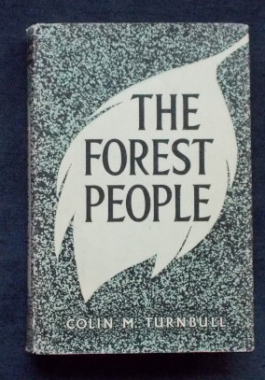 A vivid description of the author's experiences while living with the BaMbuti Pygmies, not as a clinical observer, but as their friend: learning their customs and sharing their daily life. Turnbull conveys the lives and feelings of the BaMbuti whose existence centers on their intense love for their forest world, which, in return for their affection and trust, provides their every need. He witnesed their hunting parties and nomadic camps; their love affairs and ancient ceremonies - the molimo, in which they praise the forest as provider, protector and deity; the elima, in which the young girls come of age; and the nkumbi circumcision rites, in which the villagers of the surrounding non-Pygmy tribes attempt to impose their culture on the Pygmies, whose forest home they dare not enter. An eloquent record of a people who have found in the forest that which makes their life more than just living - a life that, with all its hardships and problems and tragedies, is a wonderful thing of happiness and joy. Photographic illustrations.
A vivid description of the author's experiences while living with the BaMbuti Pygmies, not as a clinical observer, but as their friend: learning their customs and sharing their daily life. Turnbull conveys the lives and feelings of the BaMbuti whose existence centers on their intense love for their forest world, which, in return for their affection and trust, provides their every need. He witnesed their hunting parties and nomadic camps; their love affairs and ancient ceremonies - the molimo, in which they praise the forest as provider, protector and deity; the elima, in which the young girls come of age; and the nkumbi circumcision rites, in which the villagers of the surrounding non-Pygmy tribes attempt to impose their culture on the Pygmies, whose forest home they dare not enter. An eloquent record of a people who have found in the forest that which makes their life more than just living - a life that, with all its hardships and problems and tragedies, is a wonderful thing of happiness and joy. Photographic illustrations. -
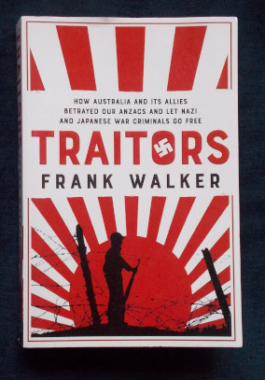
Traitors: Frank Walker
$20.00In October 1943 Winston Churchill, Franklin D. Roosevelt and Josef Stalin signed a solemn pact that once their enemies were defeated the Allied powers would 'pursue them to the uttermost ends of the earth and will deliver them to their accusers in order that justice may be done'. Nowhere did they say that justice would be selective. But it would prove to be just that. This book outlines the treachery of the British, American and Australian governments who turned a blind eye to those who experimented on Australian prisoners of war with details on how Nazis hired by ASIO were encouraged to settle in Australia and how the Catholic Church, CIA and MI6 helped the worst Nazi war criminals escape justice. While our soldiers were asked to risk their lives for King and country, Allied corporations traded with the enemy; Nazi and Japanese scientists were enticed to work for Australia, the US and UK; and Australia's own Hollywood hero Errol Flynn was associating with Nazi spies...What else did they hide? -
 A portfolio of paintings by artists who sailed with Cook, able men with a spirit equal to their Captain's who earned, through their talent and courage, the fame their sketches, watercolours and oils of unknown lands brought to them. Beautiful colour, sepia and black and white artworks.
A portfolio of paintings by artists who sailed with Cook, able men with a spirit equal to their Captain's who earned, through their talent and courage, the fame their sketches, watercolours and oils of unknown lands brought to them. Beautiful colour, sepia and black and white artworks. -
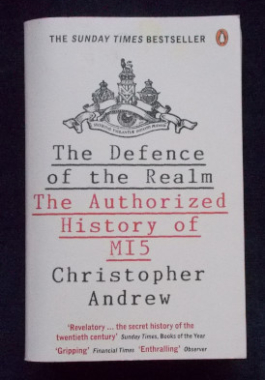 To mark the centenary of its foundation, the British Security Service, MI5, opened its archives to an independent historian. This is an unprecedented publication, revealing the precise role of the Service in twentieth-century British history, from its foundation by Captain Kell of the British Army in October 1909 to root out 'the spies of the Kaiser' up to its present role in countering Islamic terrorism. It describes the distinctive ethos of MI5, how the organization has been managed, its relationship with the government, where it has triumphed and where it has failed. In all of this, no restriction has been placed on the judgements made by the author. There is also new light cast on many events and periods in British history: that MI5 was probably the pre-war department with the best understanding of Hitler's objectives; the department's success in turning German agents during the Second World War; and that it had much greater roles than has hitherto been realised during the end of the Empire and in responding to the recurrent fears of successive governments (both Conservative and Labour) regarding Cold War/ Communist subversion. It has new information about the Profumo affair and its aftermath, the 'Magnificent Five' and a range of formerly unconfirmed Soviet contacts. Also revealed: although MI5 had a file on Harold Wilson, there was no plot against him; and what really happened during the failed IRA attack in Gibraltar in March 1988. Illustrated with numerous black and white archival photographs.
To mark the centenary of its foundation, the British Security Service, MI5, opened its archives to an independent historian. This is an unprecedented publication, revealing the precise role of the Service in twentieth-century British history, from its foundation by Captain Kell of the British Army in October 1909 to root out 'the spies of the Kaiser' up to its present role in countering Islamic terrorism. It describes the distinctive ethos of MI5, how the organization has been managed, its relationship with the government, where it has triumphed and where it has failed. In all of this, no restriction has been placed on the judgements made by the author. There is also new light cast on many events and periods in British history: that MI5 was probably the pre-war department with the best understanding of Hitler's objectives; the department's success in turning German agents during the Second World War; and that it had much greater roles than has hitherto been realised during the end of the Empire and in responding to the recurrent fears of successive governments (both Conservative and Labour) regarding Cold War/ Communist subversion. It has new information about the Profumo affair and its aftermath, the 'Magnificent Five' and a range of formerly unconfirmed Soviet contacts. Also revealed: although MI5 had a file on Harold Wilson, there was no plot against him; and what really happened during the failed IRA attack in Gibraltar in March 1988. Illustrated with numerous black and white archival photographs. -
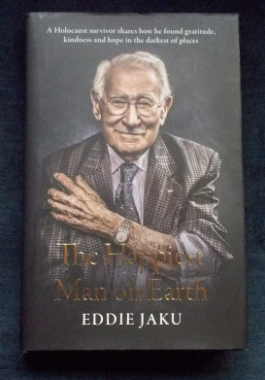 Eddie Jaku OAM (1920 - 2021) always considered himself a German first, a Jew second. He was proud of his country. But all of that changed in November 1938, when he was beaten, arrested and taken to a concentration camp. Over the next seven years, Eddie faced unimaginable horrors every day, first in Buchenwald, then in Auschwitz, then on a Nazi death march. He lost family, friends, his country. Because he survived, Eddie made the vow to smile every day. He pays tribute to those who were lost by telling his story, sharing his wisdom and living his best possible life. He believed he was the 'happiest man on earth'.
Eddie Jaku OAM (1920 - 2021) always considered himself a German first, a Jew second. He was proud of his country. But all of that changed in November 1938, when he was beaten, arrested and taken to a concentration camp. Over the next seven years, Eddie faced unimaginable horrors every day, first in Buchenwald, then in Auschwitz, then on a Nazi death march. He lost family, friends, his country. Because he survived, Eddie made the vow to smile every day. He pays tribute to those who were lost by telling his story, sharing his wisdom and living his best possible life. He believed he was the 'happiest man on earth'.Life can be beautiful if you make it beautiful. It is up to you.
-
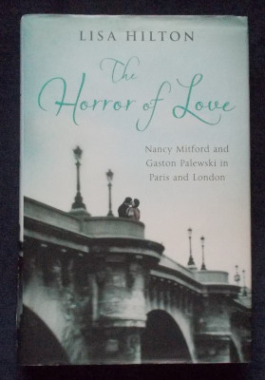 I've given up everything - my friends, my family, my country, & he simply roared with laughter, and then of course so did I...Nancy Mitford and the Free French commander Gaston Palewski conducted a less than ideal love affair in post-war France. She was one of the twentieth century's most glamorous and popular authors, he was one of the most significant European politicians of the period. He inspired and encouraged her to write one of the funniest, most painfully poignant and best-loved novels of its time, The Pursuit Of Love, and she supported him through a tumultuous political career. Their mutual life was spent amongst some of the most exciting, powerful and controversial figures of their times in the reawakening centre of European civilisation. By modern standards, their relationship was sometimes a disaster - "Oh, the horror of love!" once exclaimed Nancy to her sister, Diana Mosley. But the result is a provocative, emotionally challenging book about a very different way of conducting an affair of the heart. With discipline, gentleness and a great deal of elegance, Nancy Mitford and Gaston Palewski achieved a very adult ideal, whose story will test the reader as much as it charms. Photographically illustrated.
I've given up everything - my friends, my family, my country, & he simply roared with laughter, and then of course so did I...Nancy Mitford and the Free French commander Gaston Palewski conducted a less than ideal love affair in post-war France. She was one of the twentieth century's most glamorous and popular authors, he was one of the most significant European politicians of the period. He inspired and encouraged her to write one of the funniest, most painfully poignant and best-loved novels of its time, The Pursuit Of Love, and she supported him through a tumultuous political career. Their mutual life was spent amongst some of the most exciting, powerful and controversial figures of their times in the reawakening centre of European civilisation. By modern standards, their relationship was sometimes a disaster - "Oh, the horror of love!" once exclaimed Nancy to her sister, Diana Mosley. But the result is a provocative, emotionally challenging book about a very different way of conducting an affair of the heart. With discipline, gentleness and a great deal of elegance, Nancy Mitford and Gaston Palewski achieved a very adult ideal, whose story will test the reader as much as it charms. Photographically illustrated. -
 Who is Captain Sir Tom Moore? You've seen him on the television walking the length of his garden. A frail elderly man, doing his bit at a time of crisis. But he wasn't always like this. From a childhood in the foothills of the Yorkshire Dales, Tom Moore grew up in a loving family, which wasn't without its share of tragedy. It was a time of plenty and of want. When the storm clouds of the Second World War threatened, he raised his hand and like many of his generation, joined up to fight. His war would take him from a country he had never left to a place which would steal his heart, India and the Far East, to which he would return many years later to view the sight he had missed first time around: the distant peak of Everest. Captain Tom's story is our story. It is the story of our past hundred years here in Britain. It's a time which has seen so much change, yet when so much has stayed the same: the national spirit, the can-do attitude, the belief in doing your best for others. Illustrated with photographs.
Who is Captain Sir Tom Moore? You've seen him on the television walking the length of his garden. A frail elderly man, doing his bit at a time of crisis. But he wasn't always like this. From a childhood in the foothills of the Yorkshire Dales, Tom Moore grew up in a loving family, which wasn't without its share of tragedy. It was a time of plenty and of want. When the storm clouds of the Second World War threatened, he raised his hand and like many of his generation, joined up to fight. His war would take him from a country he had never left to a place which would steal his heart, India and the Far East, to which he would return many years later to view the sight he had missed first time around: the distant peak of Everest. Captain Tom's story is our story. It is the story of our past hundred years here in Britain. It's a time which has seen so much change, yet when so much has stayed the same: the national spirit, the can-do attitude, the belief in doing your best for others. Illustrated with photographs. -
 Shot down in 1942, young Australian fighter pilot John Williams DFC became a POW in the notorious Stalag Luft III camp in Germany. John had joined the air force shortly before the outbreak of war and, in the larrikin tradition, led his squadron into air combat over the deserts of Libya and Egypt dressed in sandals and shorts. John and his best mate Rusty Kierath were among the 76 POWs who tunnelled their way out of the supposedly escape-proof camp under the noses of their German guards in what later became the Hollywood blockbuster, The Great Escape. Their families never learned what really happened once the pair made it out into the forest. John's niece Louise Williams has pieced together his life, from his upbringing in a tight-knit family hit hard by the Depression, to his exploits in the air, and the many missing details of the tragic escape. It is a powerful and intimate story of one of the most dramatic episodes of World War II. Illustrated with black and white photographs.
Shot down in 1942, young Australian fighter pilot John Williams DFC became a POW in the notorious Stalag Luft III camp in Germany. John had joined the air force shortly before the outbreak of war and, in the larrikin tradition, led his squadron into air combat over the deserts of Libya and Egypt dressed in sandals and shorts. John and his best mate Rusty Kierath were among the 76 POWs who tunnelled their way out of the supposedly escape-proof camp under the noses of their German guards in what later became the Hollywood blockbuster, The Great Escape. Their families never learned what really happened once the pair made it out into the forest. John's niece Louise Williams has pieced together his life, from his upbringing in a tight-knit family hit hard by the Depression, to his exploits in the air, and the many missing details of the tragic escape. It is a powerful and intimate story of one of the most dramatic episodes of World War II. Illustrated with black and white photographs. -
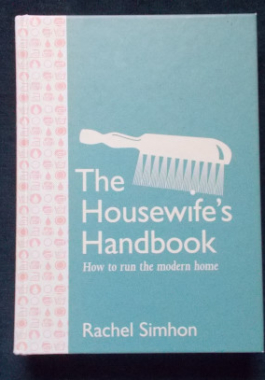 This book is for our 'inner housewife', desperate to learn what housewives everywhere used to know instinctively - how to look after our home well and efficiently, with minimum fuss. Housewifery may be a dying vocation, but generations of wifely wisdom must not be allowed to disappear with it. We need to redefine what it means to be a housewife, for the sake of our homes and for the sake of our sanity. We have become dependent on those 5-in-1 chemical cleaners; we can't seem to wield a Hoover any more; doing the laundry takes days out of our week. We are too busy! We think housework is boring! We are at crisis point! Determined to help us to regain control, Rachel Simhon has compiled this manual on everything we need to know about looking after the home. She reveals how to descale a kettle, polish silver, get scratches off glasses, minimise ironing, store food in the fridge, protect photographs from fading and fold a fitted sheet, and explains how to choose a tumble dryer...how to run the modern home.
This book is for our 'inner housewife', desperate to learn what housewives everywhere used to know instinctively - how to look after our home well and efficiently, with minimum fuss. Housewifery may be a dying vocation, but generations of wifely wisdom must not be allowed to disappear with it. We need to redefine what it means to be a housewife, for the sake of our homes and for the sake of our sanity. We have become dependent on those 5-in-1 chemical cleaners; we can't seem to wield a Hoover any more; doing the laundry takes days out of our week. We are too busy! We think housework is boring! We are at crisis point! Determined to help us to regain control, Rachel Simhon has compiled this manual on everything we need to know about looking after the home. She reveals how to descale a kettle, polish silver, get scratches off glasses, minimise ironing, store food in the fridge, protect photographs from fading and fold a fitted sheet, and explains how to choose a tumble dryer...how to run the modern home. -
 As we crowded the decks off Gallipoli and watched the first shells crash into Turkish soil... Trooper Ion L. Idriess of the 5th Australian Light Horse began keeping a diary. Over the next three years as the regiment moved onto Palestine, stormed Beersheba and pushed into the Sinai, his diary grew and became one of the most vivid pieces of war narrative ever written. Unconcerned with grand strategy or moralisations, Idriess records the realities of his war - maggot-ridden trenches crowded with the corpses of his mates, the good friendships, the bad tucker, the heat, the dust, the boredom of desert patrols - and always the fighting and his reactions to it, which reveal far better than mere description, since he was there. The rifle fire grew to a roar that drowned the voice of the man next to me. I felt as a stone age man might feel if volcanoes all around him suddenly spat life and roared...Believed to be Idriess' earliest work.
As we crowded the decks off Gallipoli and watched the first shells crash into Turkish soil... Trooper Ion L. Idriess of the 5th Australian Light Horse began keeping a diary. Over the next three years as the regiment moved onto Palestine, stormed Beersheba and pushed into the Sinai, his diary grew and became one of the most vivid pieces of war narrative ever written. Unconcerned with grand strategy or moralisations, Idriess records the realities of his war - maggot-ridden trenches crowded with the corpses of his mates, the good friendships, the bad tucker, the heat, the dust, the boredom of desert patrols - and always the fighting and his reactions to it, which reveal far better than mere description, since he was there. The rifle fire grew to a roar that drowned the voice of the man next to me. I felt as a stone age man might feel if volcanoes all around him suddenly spat life and roared...Believed to be Idriess' earliest work. -
 Originally published in 1948, Ned Kelly: Australian Son was the first modern account of the Kelly outbreak. A bold and intriguing account of the man known to some Australians as a black-hearted murderer and to others as the father of our national courage. Against the vivid background of Victoria in the last half of the 19th century, Brown's squatters, police troopers, occasional English gentlefolks and Irish-Australian settlers play out their dramas - and through their midst comes Ned Kelly - 'fearless, free and bold' on his grey mare Mirth.
Originally published in 1948, Ned Kelly: Australian Son was the first modern account of the Kelly outbreak. A bold and intriguing account of the man known to some Australians as a black-hearted murderer and to others as the father of our national courage. Against the vivid background of Victoria in the last half of the 19th century, Brown's squatters, police troopers, occasional English gentlefolks and Irish-Australian settlers play out their dramas - and through their midst comes Ned Kelly - 'fearless, free and bold' on his grey mare Mirth. -
 At one time Corrie ten Boom (1892 - 1983) would have laughed at the idea that there would ever be a story to tell. For the first fifty years of her life nothing at all out of the ordinary had ever happened to her. She was an old-maid watchmaker living contentedly with her spinster sister and their elderly father in the tiny Dutch house over their shop. Their uneventful days, as regulated as their own watches, revolved around their abiding love for one another. However, with the Nazi invasion and occupation of Holland, a story did ensue. As they watched the lights of freedom go out all over Europe, they were motivated by love to become leaders in the Dutch Underground, hiding Jewish people in their home in a specially built room and aiding their escape from the Nazis. They were caught - and Corrie was the only one who survived the horrors of Ravensbrück. Illustrated with black and white photographs.
At one time Corrie ten Boom (1892 - 1983) would have laughed at the idea that there would ever be a story to tell. For the first fifty years of her life nothing at all out of the ordinary had ever happened to her. She was an old-maid watchmaker living contentedly with her spinster sister and their elderly father in the tiny Dutch house over their shop. Their uneventful days, as regulated as their own watches, revolved around their abiding love for one another. However, with the Nazi invasion and occupation of Holland, a story did ensue. As they watched the lights of freedom go out all over Europe, they were motivated by love to become leaders in the Dutch Underground, hiding Jewish people in their home in a specially built room and aiding their escape from the Nazis. They were caught - and Corrie was the only one who survived the horrors of Ravensbrück. Illustrated with black and white photographs.












